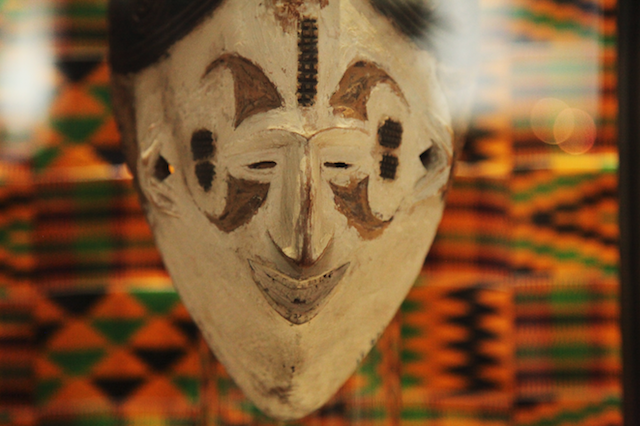As a meditation on uneasy attachments to the past, Folklore could hardly have been more sharply timed: it opened a week after Austria’s Freedom Party (which was created by former members of the Nazi Party) won enough votes to become half of a coalition government. Nor could it have been better located. Picturesquely alpine and castle-dotted, Salzburg still makes tourist money aplenty off having been the location for The Sound of Music (1965) – a videotape of which nestles among the works – and people around here still wear lederhosen. Still, the show, which features some 50 works by 28 artists, doesn’t simply disdain backward glances but, rather, offers an unpredictably gear-shifting take on nostalgia and tradition. The opening feint of David Hockney’s ghoulish-cartoonish drawings for Six Fairy Tales from the Brothers Grimm (1969) aside, it achieves this mostly using conceptual art from the museum’s own holdings (and those of the Generali Foundation, which it now stewards), plus a smattering of ideological 1930s photographs of mountains, bearded elders and dirndl-wearing fräuleins. The past, these braided strands suggest, requires filtering through the cerebral cortex before it tugs at the emotions.
On occasion, fuzzy history and icy realism meet in a single work. In their 20-photo leporell Neunzehnhundert_Ötvenhat (Nineteenhundred_fiftysix, 2004), Anna Artaker and Lilla Khoor flip between two sides of the region’s past, alternating scenes from the Austro-Hungarian nostalgia movie Sissi – The Young Empress (1956) with scenes of the Soviet invasion of Hungary from the same year. Beside it, Erwin Wurm’s one-liner Self-Portrait as Pickles (2008) directly skews national pride: it transmutes the artist into 37 painted, cast-acrylic upright gherkins on plinths, turning a comestible beloved by his countrymen into a monotonous portrait of the artist – and maybe Austrians in general – as ridiculous green phalluses: naive dicks. Kader Attia’s Dispossession #2 (2013) cycles through slide images of looted tribal objects in ethnological collections (such as the Missionhaus Maria Sorg near Salzburg, the wall text points out). On video, a talking head discusses how these things are stored away in vast numbers in, for example, the Vatican’s collection, rarely seen by the public and losing their meaning. As such, Attia offers an unknowing counterweight to Kathi Hofer’s equally problematic traditional three-buttoned woollen alpine vests, hung on the wall and titled after saints and foreign cities, from 2016). These connect their wearers soothingly to the past, and keep it alive; but, again, such a connection is the bedrock of Austria’s dangerous nationalist streak.
Elsewhere the thematic context serves to lightly refresh such editioned-video warhorses as Dan Graham’s Rock My Religion (1982–84) – his video-collage thesis that rock music extends an American religious lineage dating back to the Shakers – and Martha Rosler’s sardonically violent upending of the woman’s traditional role as cook, Semiotics of the Kitchen (1975), though by the time we reach Rodney Graham’s concrete poem concerning Moby-Dick (1851), one might fairly wonder if any connection between past and present is up for grabs here. But even in the stumbling progress one makes towards accommodating such a piece, Folklore’s curating has done its work. It makes the category a question, a problem: both unsettled and unsettling.
Folklore: A Controversy with Works from the Collections is on show at Museum der Moderne, Salzburg through 15 April
From the January & February issue of ArtReview
